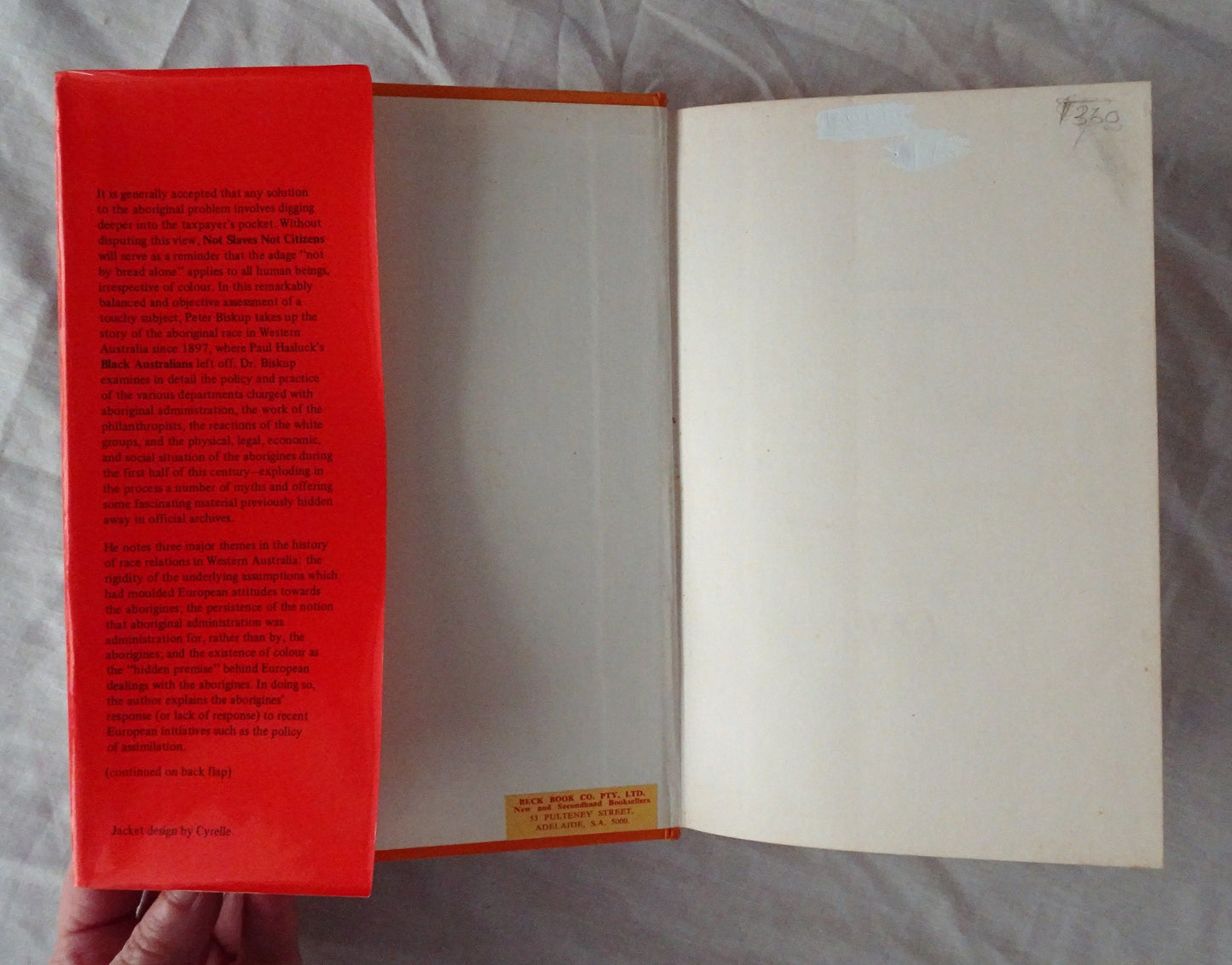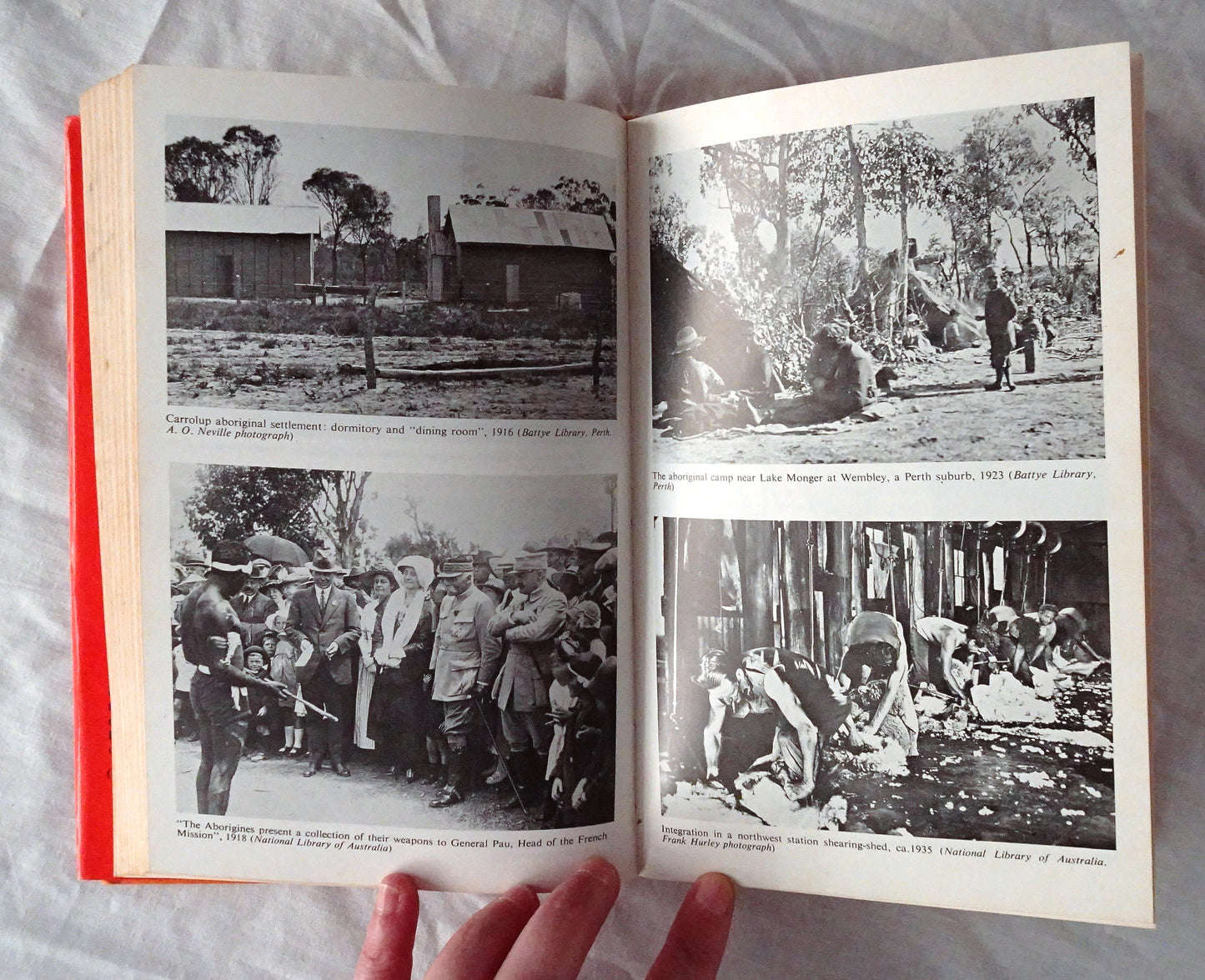Not Slaves Not Citizens by Peter Biskup
Not Slaves Not Citizens by Peter Biskup
Couldn't load pickup availability
Not Slaves Not Citizens
The Aboriginal Problem in Western Australia 1898-1954
by Peter Biskup
University of Queensland Press, 1973, [First Edition], ISBN 0844801224, lightly illustrated with black and white photographic plates, hardcover, dustjacket
Very Good Condition, a little edge and shelf wear, a little rubbing and bumping to edges and corners, previous owners inscription whited out and lead pencil smudging on front endpaper, store sticker to inside front cover, minor spot on front flyleaf, some light lead pencil (easily removable, but needs to be mentioned) to some pages, minor marking to fore edges, dustjacket shows some edge and shelf wear with a little rubbing and bumping to edges and corners, sunned spine, rubbing and minor marking to front and back (see photographs)
“ It is generally accepted that any solution to the aboriginal problem involves digging deeper into he taxpayer’s pocket. Without disputing this view, Not Slaves Not Citizens will serve as a reminder that the adage “not by bread alone” applies to all human beings, irrespective of colour. In this remarkably balanced and objective assessment of a touchy subject, Peter Biskup takes up the story of the aboriginal race in Western Australia since 1897, where Paul Hasluck’s Black Australian left off. Dr. Biskup examines in detail the policy and practice of the various departments charged with aboriginal administration, the work of the philanthropists, the reactions of the white groups, and the physical, legal, economic, and social situation of the aborigines during the first half of this century – exploding in the process a number of myths and offering some fascinating material previously hidden away in official archives.
He notes three major themes in the history of race relations in Western Australia: the rigidity of the underlying assumptions which had moulded European attitudes towards the aborigines; the persistence of the notion that aboriginal administration was administration for, rather than by, the aborigines; and the existence of colour as the “hidden premise” behind European dealings with the aborigines. In doing so, the author explains the aborigines’ response (or lack of response) to recent European initiatives such as the policy of assimilation.
Although it deals only with Western Australia, Not Slaves Not Citizens provides an invaluable background to the understanding of the current aboriginal situation all over the Australian continent, and should appeal to historians, social scientists of all descriptions, and all those interested in aboriginal administration and the aboriginal problem generally.”




























